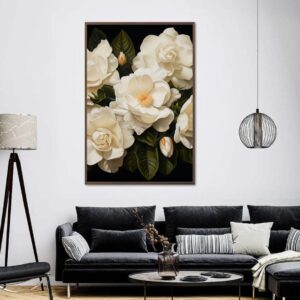Indoor plants have experienced a resurgence in popularity over recent years, and for good reason. They not only add natural beauty to your living spaces but also provide numerous benefits for your physical and mental well-being. In this blog post, we’ll delve into the wonderful world of indoor plant care and decor, offering tips on selecting the right plants, keeping them healthy, and integrating them seamlessly into your home.
The Greenery Revolution
Indoor plants have evolved from mere decorations to integral components of interior design. Their ability to enhance the aesthetics of a room while contributing to air purification and overall ambiance has made them a staple in modern homes.
But it’s not just about placing a potted plant on your windowsill and hoping for the best. Proper indoor plant care and decor require thoughtful consideration and attention.
Choosing the Right Indoor Plants
Before you begin your indoor plant journey, it’s essential to select the right plants for your space. Here are some factors to consider:
1. Light Conditions
Different plants have varying light requirements. Assess the natural light available in your home to determine which plants will thrive. Some popular low-light options include snake plants and pothos, while succulents and fiddle leaf figs love bright, indirect light.
2. Space Constraints
Consider the available space in your home. Compact plants like succulents and air plants are perfect for small apartments, while larger spaces can accommodate tall and bushy specimens like rubber plants and monstera.
3. Maintenance Level
Be honest with yourself about your level of commitment to plant care. Some plants, like cacti and snake plants, are incredibly low-maintenance and forgiving to beginners, while others, like orchids and fiddle leaf figs, require more attention and care.
4. Allergies and Pets
If you have allergies or pets, be cautious about the types of plants you bring into your home. Some plants may be toxic to pets, so it’s crucial to do your research if you have furry friends.
Indoor Plant Care Tips
Now that you’ve chosen the perfect indoor plants, let’s delve into how to care for them:
1. Watering
Overwatering is one of the most common mistakes in indoor plant care. Be sure to research the specific watering needs of your plants and adjust your watering schedule accordingly. Always allow excess water to drain from the pots, and use a saucer to catch any runoff.
2. Light
Place your plants in areas where they can receive the appropriate amount of light. Rotate them occasionally to ensure even growth, as plants tend to lean toward the light source.
3. Humidity
Many indoor plants thrive in humid conditions. You can increase humidity by misting your plants or placing a tray of water near them. Alternatively, consider investing in a humidifier.
4. Pruning and Repotting
Regularly trim dead or yellowing leaves to encourage healthy growth. Repot your plants when they outgrow their containers, usually every couple of years. Choose pots with drainage holes to prevent overwatering.
5. Fertilizing
Indoor plants benefit from occasional fertilization, especially during the growing season (typically spring and summer). Use a balanced, water-soluble fertilizer, and follow the instructions on the label.
Styling Indoor Plants in Different Rooms
Now that you’ve mastered the basics of indoor plant care, it’s time to integrate these green beauties into your decor:
1. Living Room
Use larger, statement plants like fiddle leaf figs or tall palms to create a focal point. Place smaller plants on coffee tables, shelves, or hanging planters to add layers of greenery.
2. Kitchen
Herbs like basil, mint, and rosemary thrive in kitchen environments. Use attractive pots and planters to incorporate herbs into your kitchen decor while making them easily accessible for cooking.
3. Bathroom
Many plants, such as snake plants and spider plants, love the humid conditions of bathrooms. Add them to shelves, and countertops, or even hang them from the ceiling for a spa-like atmosphere.
4. Bedroom
Opt for calming, low-maintenance plants like lavender or aloe vera to promote relaxation in your bedroom. Place them on bedside tables or floating shelves.
5. Home Office
Introduce air-purifying plants like peace lilies or snake plants to your home office to improve air quality and enhance productivity.
The Benefits of Indoor Plants
Beyond their aesthetic appeal, indoor plants offer a plethora of benefits for your well-being:
- Improved Air Quality: Many plants are natural air purifiers, removing toxins and pollutants from the air.
- Stress Reduction: The presence of indoor plants has been linked to reduced stress and improved mental health.
- Increased Productivity: Indoor plants in workspaces have been shown to increase focus and productivity.
- Connection to Nature: Indoor plants can help you stay connected to nature, even when you’re indoors.
Conclusion
Indoor plant care and decor offer a delightful way to breathe life into your living spaces while reaping the physical and mental benefits they provide. By choosing the right plants, mastering their care, and integrating them into your decor, you can create a harmonious and inviting environment that celebrates the beauty of nature.
So, whether you’re a seasoned plant enthusiast or a beginner looking to embark on this greenery journey, start by selecting the perfect indoor plants for your space. With a little care and creativity, you can transform your home into a lush and thriving oasis.
Happy planting!










